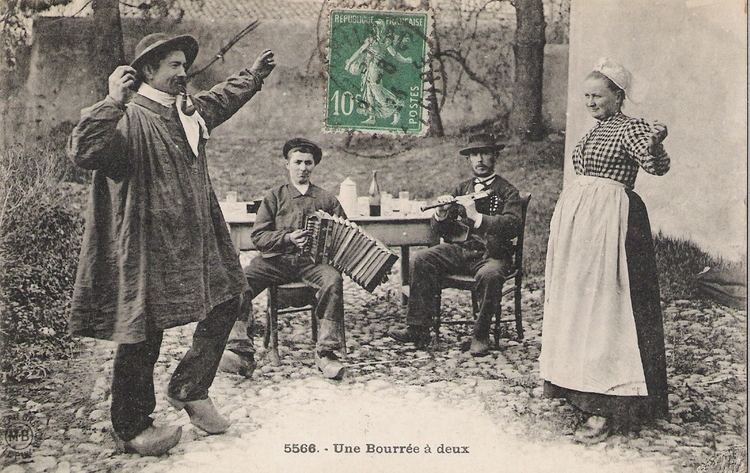 | ||
Bourrée fantasque is a piece of music for solo piano by Emmanuel Chabrier (1841–1894), being one of his last major completed works.
Contents
Background
Bourrée fantasque is dedicated to the pianist Édouard Risler (1873-1929), who in fact did not play the work in public until after the composer’s death. The first public performance was given by Madeleine Jaeger (Mme Henry Jossic, 1868-?) on 7 January 1893 at the Société Nationale de Musique in Paris.
It was composed around April 1891, following a visit to his native Auvergne the previous summer, when Chabrier’s health was deteriorating. According to Alfred Cortot it is "one of the most exciting and original works in the whole literature of French piano music". Unlike much nineteenth century writing for the pianoforte, the instrument is treated almost like an orchestra, and "foreshadows innovations in pianistic technique introduced by Ravel in Gaspard de la nuit and Debussy in the late Études". The manuscript is at the Bibliothèque nationale de France.
The music
In a letter to Risler dated 12 May 1891, Chabrier wrote "I have made you a little piano piece which I think is quite amusing and in which I have counted about 113 different sonorities. Let us see how you will make this one shine! It should be bright and crazy!". The precision of the notation in each bar, dynamics from ppp to tutta forza, accents, pedal indications, bear witness to his wish to obtain an exceptional tonal variety and richness. The piece lasts around six minutes.
In 2/4 time, the piece opens with the repeated notes of the main theme (Très animé et avec beaucoup d’entrain) hammered out in the middle register of the piano, and put through its paces. The middle section changes mood with a freely-modulating caressing melody (molto espressivo) before the original theme returns pp, worked in combination with the second theme, until the main bourrée theme "rampages from top to bottom of the keyboard subjected to increasing elaboration and bravura treatment".
In relation to the Bourrée fantasque Koechlin affirmed that Chabrier was the forerunner of modern French composers through the boldness of his writing technique, use of certain chord progressions, and use of modal atmosphere and ancient modes - which is never artificial or imitative, but a natural means of poetic expression.
Orchestrations
Chabrier's unfinished orchestration consists of 16 pages of score, or about one third of the work, with all tempi and indications for performance carefully marked.
Ballet
Jean-Jacques Etchevery created a ballet of the same title using Chabrier’s music for the Opéra-Comique in 1946.
George Balanchine also created a ballet based on the piece for New York City Ballet in 1949.
